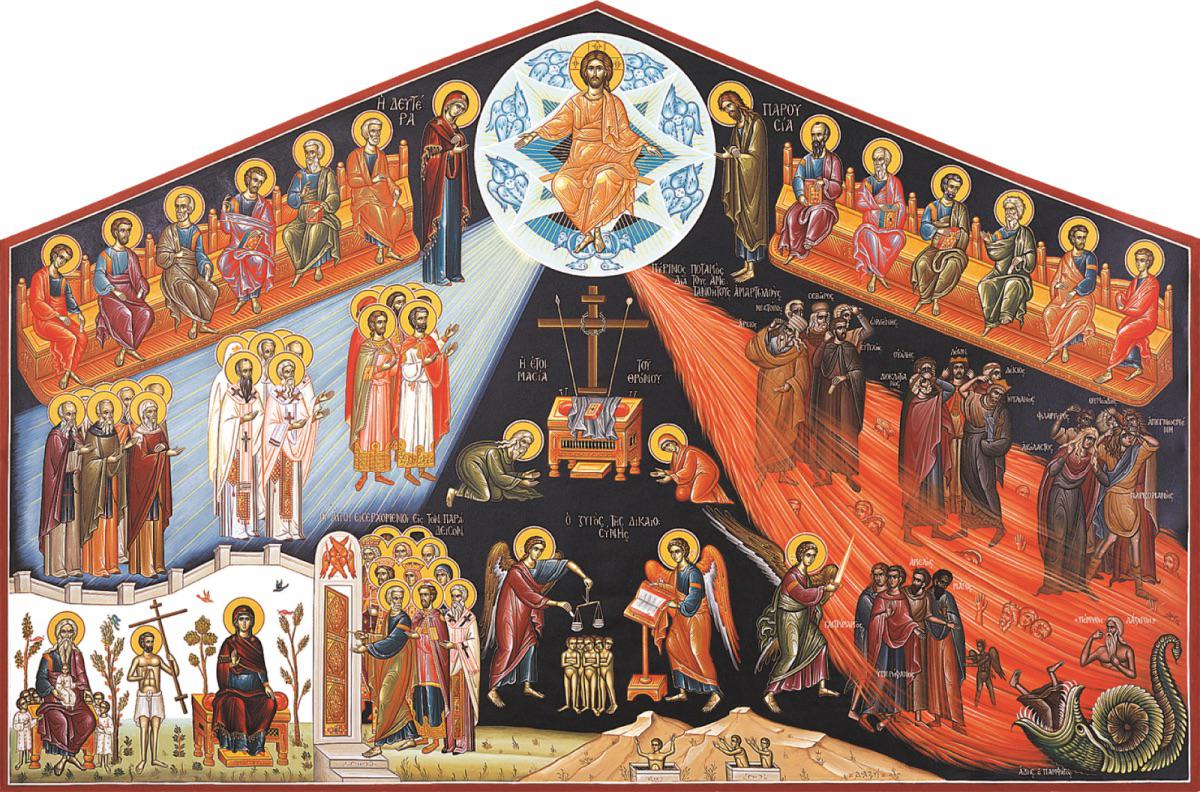In the Holy Orthodox Church, we spend three weeks preparing for Great Lent, the 40-day fast that leads us to Pascha, or the Resurrection of Our Lord and Savior Jesus Christ. During the final week of this pre-Lent period, we remember and reflect on Christ’s parable of the Last Judgment. In this post, we explore this parable in more depth and explain the lessons it teaches us.
5 minutes
Parable of the Last Judgment
We find the parable of the Last Judgment in Matthew 25:31-46. In this parable, the Lord speaks about what will happen at His Second Coming, when He will “sit on the throne of His glory” and separate all the nations “as a shepherd divides his sheep from the goats” (vv. 31-32). The sheep will be on His right hand, and the goats on the left.
The sheep receive the Kingdom prepared for them, because of their compassion, love, and almsgiving to those in need. The goats, on the other hand, receive condemnation because they did not care for their fellow man or show compassion upon him. For “inasmuch as [they] did not do it to one of the least of these, [they] did not do it to [Him]” (v. 45). Jesus concludes His parable by stating that those on the left “will go away into everlasting punishment, but the righteous into eternal life” (v. 46).
Read More: Why Did Christ Speak In Parables?
What’s in the icon?
The icon of the Last Judgment is perhaps one of the most detailed, ornate icons in the Orthodox Church. In the icon, we see all the elements of Christ’s parable illustrated. In the top center, Christ sits on the throne, extending His hands in blessing to the Theotokos on His right, and John the Baptist on His left. On smaller thrones we see the Apostles, six on either side. Below Christ we see Adam and Eve bowing in worship before Him. And below them, the Archangel Michael holds the scales of judgment while another angel reads from the books that contain the works of each person (Revelation 20:11-13).

To Christ’s right (and our left), we see the sheep gathered in white light. And on His left (our right), we see the goats in a red light meant to resemble the everlasting fire. We also see people rising from their tombs at the bottom of the icon, which shows that both the living and the dead will stand before Christ at the Judgment. The righteous enter paradise in the lower left corner, while the wicked and unrepentant go to everlasting punishment.
What does this parable teach us?
In the two Sundays before we read this parable, we hear about God’s patience and limitless compassion, and of His readiness to accept all who return to Him in repentance. On this third Sunday, He reminds us of a powerful, complementary truth. No one is so patient and merciful as God, but He does not forgive those who don‘t repent.
Keep Reading: The Basis of God’s Judgment
We can and should trust in Christ’s love and mercy. But in hardening our hearts toward others and failing to help and care for them, we pass judgment on ourselves. Although God does not desire the death of a sinner, He expects us to turn from our wickedness and live. This requires active repentance and forgiveness on our part. It requires our working in synergy with God to turn from our sins and pursue virtue and righteousness. And the time for this is now. At the Second Coming, Christ will appear as the righteous Judge, “Who will render to every man according to his deeds” (Romans 2:6). By then, it will be too late to entreat God’s mercy and forgiveness.
Love as the criterion for judgment
As Father Alexander Schmemann reminds us in his book Great Lent, sin is the absence of love. It is separation and isolation from God. And it is through love for our fellow man, because God is love, that we return into communion with Him.
When Christ comes to judge the world, He will judge us on whether we have loved our neighbor. Christian love means seeing Christ in others we encounter in our lives, no matter who they are, and treating them accordingly. This does not just mean showing mere “concern” for them, nor does it mean doing things to get “brownie points” with God. Rather, this means genuine love for the other person that results in loving action. We show this love when we feed the hungry, give drink to the thirsty, clothe the naked, visit those who are sick or in prison. If we did such things for the least of Christ’s brethren, then we also did them for Christ. If we did not do such things for the least of the brethren, neither did we do them for Christ.
Sermon from Father Thomas Hopko
We leave you with a phenomenal sermon from +Father Thomas Hopko on the Last Judgment. We hope this helps put you in the proper spirit of repentance, humility, and joyful sorrow as you prepare for the start of Great Lent.
Keep Reading: The Sunday of Forgiveness (Cheesefare Sunday)
